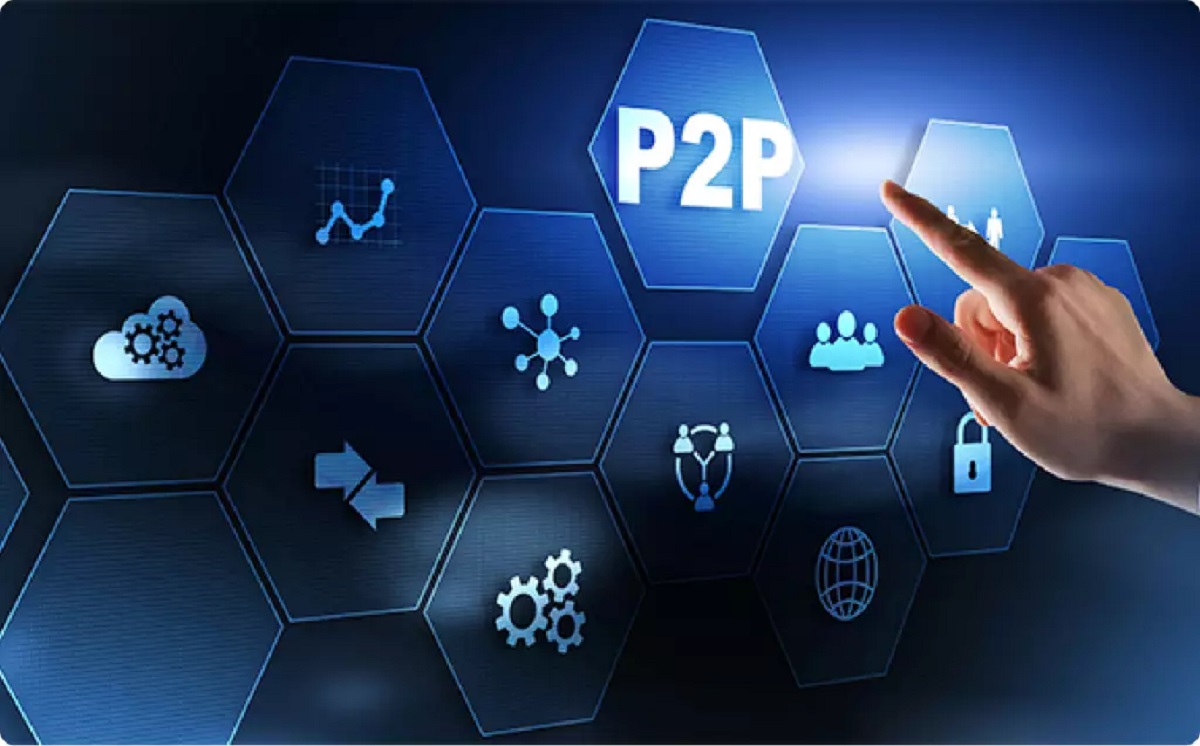Introduction
Welcome to the world of consumer direct lending, where borrowers have a direct line of communication with lenders, bypassing the traditional middlemen and streamlining the loan process. With the advent of technology and the internet, consumer direct lending has emerged as a popular and convenient option for individuals seeking loans for various purposes.
In this article, we will explore what consumer direct lending is all about, its benefits, the lending process, and how it differs from traditional lending methods. We will also discuss the factors to consider when choosing a consumer direct lender and the impact of technology on this industry.
Consumer direct lending offers borrowers a simpler, more transparent, and personalized approach to obtaining loans. By cutting out the intermediaries, borrowers can have direct access to lenders, resulting in faster loan processing times and potentially better terms and rates.
Whether you’re looking to finance a new home, buy a car, consolidate debt, or fund a big-ticket purchase, consumer direct lending has become a viable alternative to the traditional lending landscape.
So, let’s dive into the world of consumer direct lending and explore the benefits and intricacies of this modern lending approach.
What is Consumer Direct Lending?
Consumer direct lending is a loan origination process that allows borrowers to directly access lenders, bypassing traditional financial institutions, such as banks or credit unions. With consumer direct lending, borrowers can apply for loans, receive loan offers, and complete the loan process entirely online.
Unlike traditional lending methods, consumer direct lending eliminates the need for in-person meetings or phone calls with loan officers. Instead, borrowers can complete the entire loan application and approval process conveniently from the comfort of their own homes. This streamlines the lending process and saves borrowers time and effort.
Consumer direct lending can offer various types of loans, including personal loans, mortgages, auto loans, and small business loans. It provides borrowers with greater accessibility, flexibility, and customization compared to traditional lending channels.
One of the defining features of consumer direct lending is the use of advanced technology and online platforms. Lenders leverage innovative tools and algorithms to assess borrower eligibility, determine loan terms, and deliver loan offers in a matter of minutes.
Additionally, consumer direct lending often incorporates data-driven underwriting, which allows lenders to analyze vast amounts of information to make informed lending decisions. This data-driven approach enables lenders to evaluate borrower creditworthiness more comprehensively and potentially offer loans to individuals who may have been overlooked by traditional lenders.
Furthermore, consumer direct lending platforms typically provide borrowers with easy-to-use interfaces where they can track their loan status, make payments, and communicate with lenders throughout the loan term.
In summary, consumer direct lending is a modern and convenient loan origination process that cuts out intermediaries and empowers borrowers to directly access lenders. By leveraging technology, consumer direct lending provides a faster, more accessible, and personalized lending experience compared to traditional lending methods.
Benefits of Consumer Direct Lending
Consumer direct lending offers several advantages for borrowers compared to traditional lending methods. Here are some key benefits to consider:
- Convenience and Accessibility: With consumer direct lending, borrowers can apply for loans and complete the entire lending process online, saving valuable time and effort. This eliminates the need for in-person meetings or visits to physical loan offices, making it a convenient option for busy individuals.
- Speedy Approval and Funding: Consumer direct lenders often leverage technology and automated processes to expedite loan approvals and disburse funds quickly. The streamlined nature of consumer direct lending allows for faster application processing and decision-making, helping borrowers access the funds they need in a timely manner.
- Transparent and Competitive Terms: Consumer direct lending platforms typically provide borrowers with transparent information about loan terms, fees, and interest rates. This transparency allows borrowers to make informed decisions and compare different loan options easily. Additionally, the increased competition amongst online lenders can lead to better terms and rates for borrowers.
- Customization and Personalization: Consumer direct lending platforms often offer borrowers the flexibility to customize loan terms according to their specific needs and preferences. Borrowers can choose loan amounts, repayment periods, and other variables to tailor the loan to their unique circumstances.
- Accessibility for Borrowers with Lower Credit Scores: Traditional lenders typically place a heavy emphasis on credit scores when evaluating loan applications. However, consumer direct lenders may use alternative data and innovative underwriting models to assess borrower creditworthiness. This means that individuals with lower credit scores may have a better chance of obtaining a loan through consumer direct lending.
- Customer Support and Communication: Consumer direct lending platforms often provide robust customer support and communication channels for borrowers. Borrowers can easily reach out to lenders for assistance, clarification, or any questions they may have regarding their loan application or terms.
Consumer direct lending offers a range of benefits that make it an attractive option for borrowers. From the convenience and speed of the loan process to the transparency of terms and the ability to customize loans, consumer direct lending provides borrowers with a modern and customer-centric lending experience.
Consumer Direct Lending Process
The consumer direct lending process is designed to be simple, convenient, and user-friendly. Here are the general steps involved:
- Research: Borrowers start by researching consumer direct lenders to find the ones that best align with their loan needs. They can compare interest rates, terms, fees, and customer reviews to make an informed decision.
- Application: Once a borrower selects a consumer direct lender, they proceed to the loan application. Borrowers typically complete an online application form, providing necessary personal and financial information, such as income, employment details, and credit history.
- Identity Verification: Lenders may require borrowers to verify their identity and financial information through documentation such as government-issued IDs, pay stubs, bank statements, or tax returns. This step ensures the accuracy and legitimacy of the borrower’s application.
- Loan Offer: After reviewing the borrower’s application and verifying their information, the lender determines whether to extend a loan offer. If approved, the lender provides the borrower with the terms of the loan, including the loan amount, interest rate, repayment period, and any applicable fees.
- Review and Acceptance: Borrowers should carefully review the loan offer, including the terms and conditions, interest rates, fees, and repayment schedule. If satisfied with the offer, the borrower can accept it by electronically signing the loan agreement.
- Funds Disbursement: Once the borrower accepts the loan offer, the lender initiates the funds transfer. Depending on the lender and the borrower’s preferred method, funds may be deposited directly into the borrower’s bank account or sent as a check.
- Loan Repayment: Borrowers are required to make timely payments according to the agreed-upon repayment schedule. Most consumer direct lenders offer flexible payment options, including auto-debit, online payments, or manual payments.
- Customer Support: Throughout the loan term, borrowers can reach out to the consumer direct lender’s customer support team for any inquiries, assistance, or changes to the loan terms.
The consumer direct lending process promotes efficiency and provides borrowers with more control over their loan journey. With the ability to complete the application and approval process online, borrowers can save time and enjoy a simplified experience compared to traditional lending methods.
Consumer Direct Lending vs. Traditional Lending
Consumer direct lending and traditional lending are two distinct approaches to borrowing money. Here are some key differences between the two:
1. Accessibility and Convenience: Consumer direct lending offers borrowers the convenience of applying for loans online, 24/7, from anywhere with an internet connection. On the other hand, traditional lending typically requires in-person visits to brick-and-mortar banks or credit unions during their operating hours, which may not be as accessible or convenient for all borrowers.
2. Application and Approval Process: Consumer direct lending streamlines the application and approval process by leveraging technology and automated systems, allowing for faster loan decisions. Traditional lenders often have a more time-consuming and paperwork-intensive process, with longer approval times.
3. Interest Rates and Fees: Consumer direct lending platforms typically offer competitive interest rates and may have lower fees compared to traditional lenders. This is because consumer direct lenders have lower overhead costs and can pass on the savings to borrowers.
4. Credit Score Requirements: Traditional lenders typically place a significant emphasis on credit scores when evaluating loan applications. Consumer direct lenders, however, may use alternative credit data and innovative underwriting models, allowing for more flexibility and the potential for borrowers with lower credit scores to be approved.
5. Customization and Personalization: Consumer direct lending often offers borrowers more flexibility in customizing loan terms to fit their specific needs. Traditional lending may have stricter guidelines and less room for negotiation on terms and conditions.
6. Customer Service: Consumer direct lending platforms usually provide strong customer support and communication channels, with online chat, email, or phone assistance available. Traditional lenders may offer in-person customer support, but it can be limited to banking hours.
7. Relationship Building: Traditional lenders often prioritize building long-term relationships with borrowers. This can be beneficial for individuals who prefer a more personal touch or desire a breadth of financial services. Consumer direct lending, on the other hand, focuses more on the efficiency and speed of the loan process.
It’s important to note that both consumer direct lending and traditional lending have their advantages and may be suitable for different borrowers depending on their preferences, financial situation, and borrowing needs.
Factors to Consider when Choosing a Consumer Direct Lender
When selecting a consumer direct lender, it’s crucial to consider several factors to ensure you make the right choice for your borrowing needs. Here are some key factors to consider:
- Reputation and Credibility: Look for consumer direct lenders with a solid reputation and positive customer reviews. Check their credentials, licenses, and affiliations to ensure they are a legitimate and trustworthy lender.
- Interest Rates and Fees: Compare the interest rates and fees offered by different consumer direct lenders. Lower interest rates and reasonable fees can save you money over time, potentially reducing the overall cost of your loan.
- Loan Terms and Flexibility: Review the loan terms and conditions offered by each lender. Consider factors such as loan amounts, repayment periods, and any flexibility in modifying the loan terms if needed. Choose a lender that aligns with your specific borrowing requirements.
- Customer Support: Evaluate the level of customer support provided by the consumer direct lender. Prompt and helpful customer service can be crucial in addressing any concerns or issues that may arise during the loan process.
- Speed and Efficiency: Assess the efficiency of the lender’s loan application and approval process. Look for lenders that provide quick decisions and prompt funding, especially if you need the funds urgently.
- Transparency and Disclosure: Ensure that the lender is transparent about their loan terms, fees, and any potential penalties. Read through the loan agreement carefully to understand all the terms and conditions before accepting the loan offer.
- Security and Privacy: Verify that the consumer direct lender has robust security measures in place to protect your personal and financial information. Look for lenders that prioritize data privacy and employ encryption technology for online transactions.
- Accessibility and Convenience: Consider the user-friendliness of the lender’s online platform or mobile app. A well-designed and intuitive interface can simplify the loan application, repayment, and communication process.
- Additional Services: Some consumer direct lenders offer additional services such as financial education resources, credit monitoring, or loan refinancing options. These supplementary offerings can add value and convenience to your borrowing experience.
By carefully evaluating these factors, you can choose a reputable and reliable consumer direct lender that meets your borrowing requirements and provides an excellent customer experience.
Consumer Direct Lending and Technology
Consumer direct lending has been greatly influenced by advancements in technology, which have revolutionized the lending industry. Here are some ways in which technology has shaped consumer direct lending:
1. Online Platforms: Technology has allowed consumer direct lenders to provide borrowers with intuitive and user-friendly online platforms. These platforms enable borrowers to easily navigate through the loan application process, submit required documents, and track their loan status electronically.
2. Automated Underwriting: With the use of advanced algorithms and data analysis tools, consumer direct lenders can automate the underwriting process. Automated underwriting allows for faster evaluation of loan applications and assists in determining borrower eligibility and appropriate loan terms based on creditworthiness and risk assessment models.
3. Alternative Credit Data: Technology has enabled consumer direct lenders to tap into alternative data sources beyond traditional credit history. By gathering and analyzing alternative credit data, such as utility bill payments or rental history, lenders can better assess the creditworthiness of individuals who may not have a well-established credit history.
4. Mobile Applications: Many consumer direct lenders now offer mobile applications, allowing borrowers to apply for loans, track their loan progress, and make payments conveniently from their smartphones or tablets. Mobile apps provide borrowers with greater accessibility and flexibility, and they are ideally suited for borrowers who prefer to manage their loans on the go.
5. Faster Decision-Making: Through the use of technology, consumer direct lenders can analyze borrower information and make loan decisions much faster than traditional lenders. Automated processes, combined with the ability to process vast amounts of data in real-time, allow lenders to provide faster loan approvals, reducing the waiting time for borrowers.
6. Enhanced Security: Technology plays a crucial role in maintaining the security of borrower information during online transactions and data storage. Consumer direct lenders employ encryption technology, secure servers, and strict privacy protocols to protect borrowers’ personal and financial data from unauthorized access.
7. Data Analytics: The use of data analytics in consumer direct lending has allowed lenders to gain valuable insights into borrower behavior and trends. By analyzing patterns, lenders can refine their loan products, tailor offerings to specific borrower segments, and improve the overall lending experience for borrowers.
Overall, technology has transformed consumer direct lending by making it easier, faster, and more convenient for borrowers to obtain loans. It has brought greater transparency, efficiency, and personalized experiences to the lending process, benefiting borrowers who seek a modern and streamlined approach to borrowing money.
Conclusion
Consumer direct lending has emerged as a modern and convenient alternative to traditional lending methods. By leveraging technology and online platforms, borrowers can directly access lenders, streamlining the loan application and approval process. The benefits of consumer direct lending are numerous, including convenience, speedy approval, transparent terms, and the ability to customize loans.
When choosing a consumer direct lender, it is essential to consider factors such as reputation, interest rates, customer support, and security measures. By conducting thorough research and comparison, borrowers can select a reliable lender that aligns with their borrowing needs and provides a positive borrowing experience.
Technology has played a significant role in shaping consumer direct lending. Online platforms, automated underwriting, alternative credit data, and mobile applications have transformed the lending landscape, making it more efficient, accessible, and secure. Borrowers can enjoy the benefits of faster decision-making, hassle-free loan applications, and enhanced customer service.
Consumer direct lending continues to evolve with advancements in technology, enabling lenders to optimize their processes and provide borrowers with a seamless borrowing experience. As technology continues to evolve, we can expect further innovations in consumer direct lending that will further enhance the borrower experience.
Whether you’re looking to finance a new home, consolidate debt, or fund a personal project, consumer direct lending provides a modern and customer-centric approach to obtaining financing. With its convenience, transparency, and personalized options, consumer direct lending is paving the way for a more efficient and accessible borrowing process in the digital age.

























